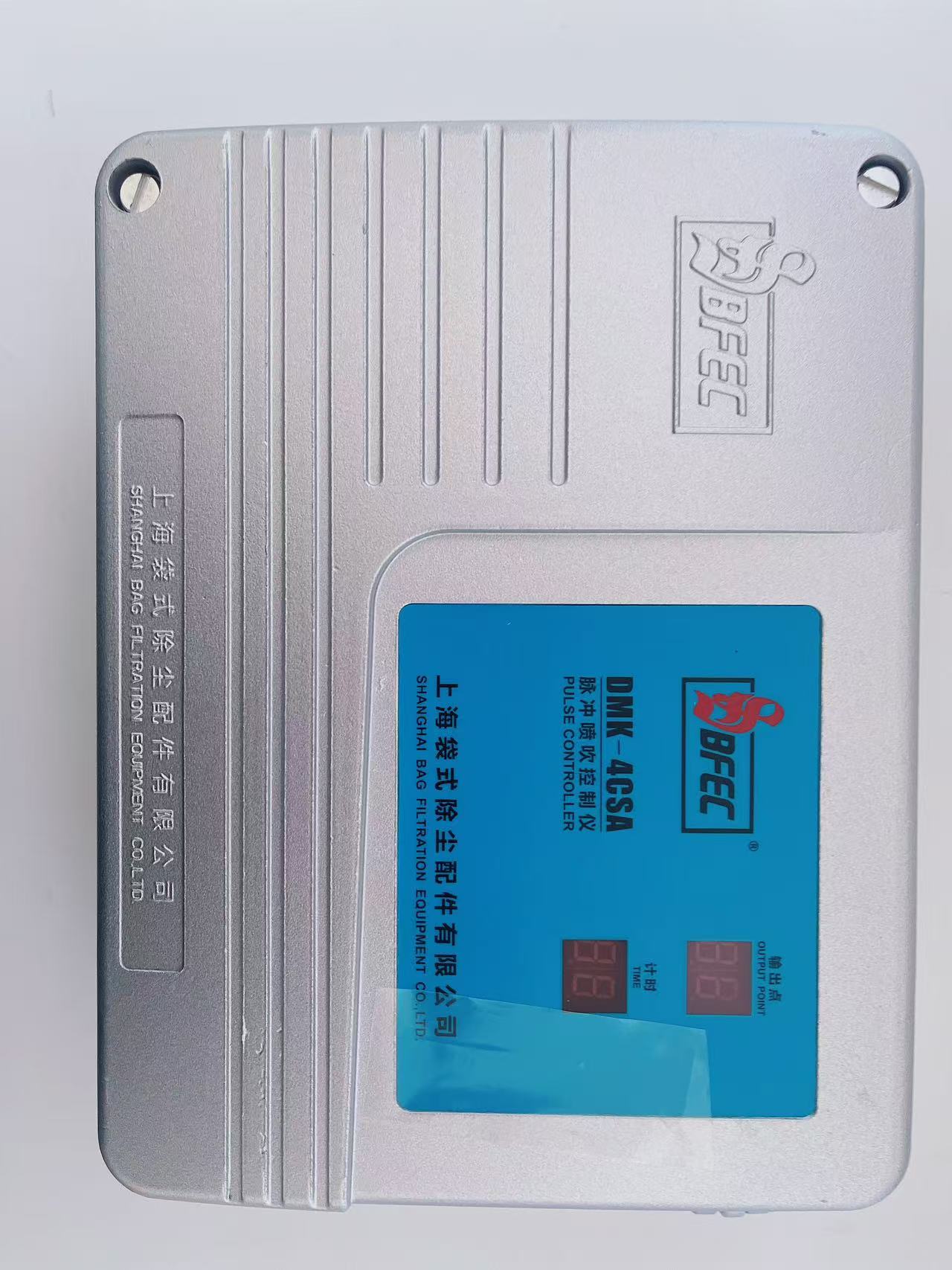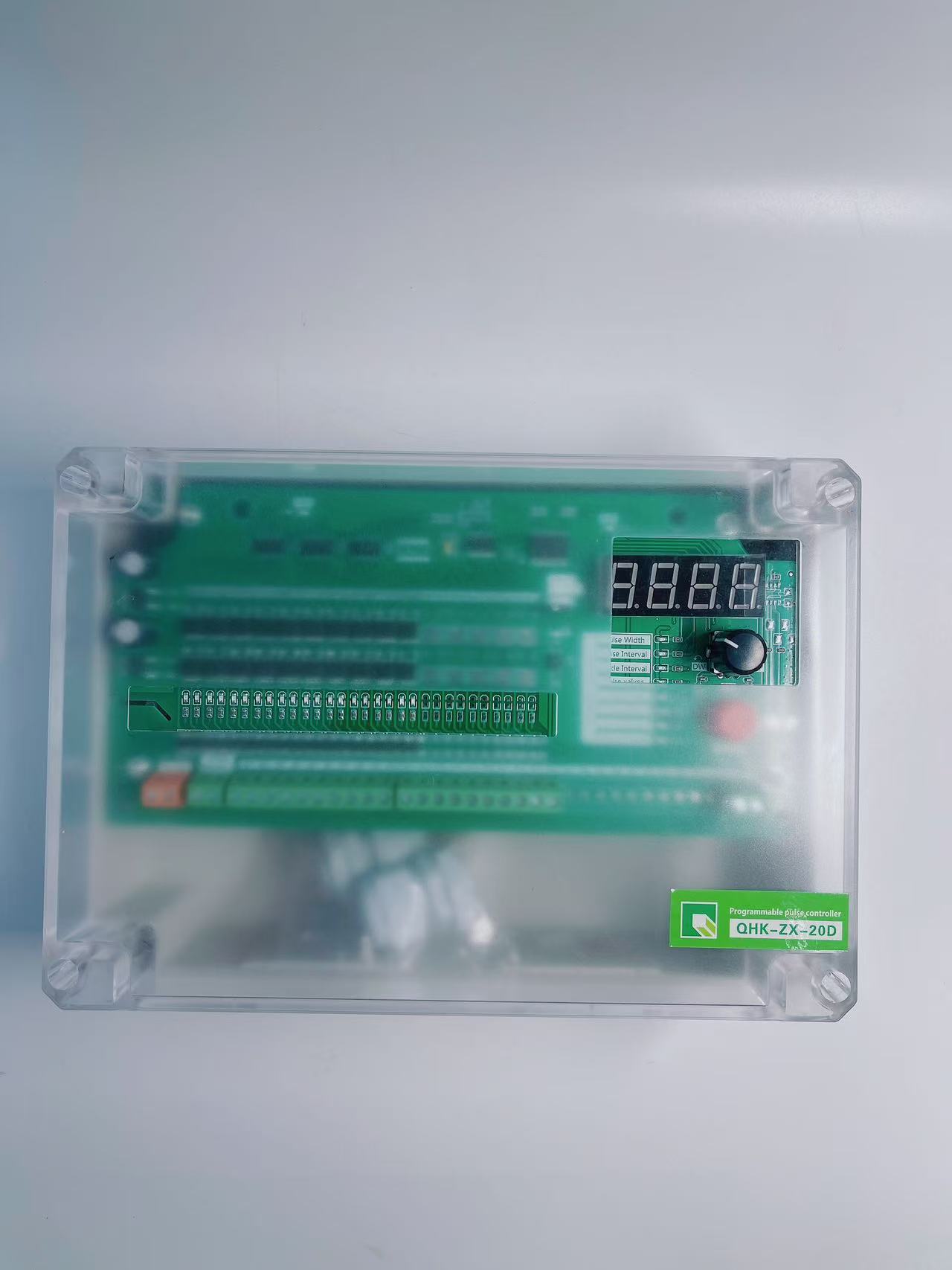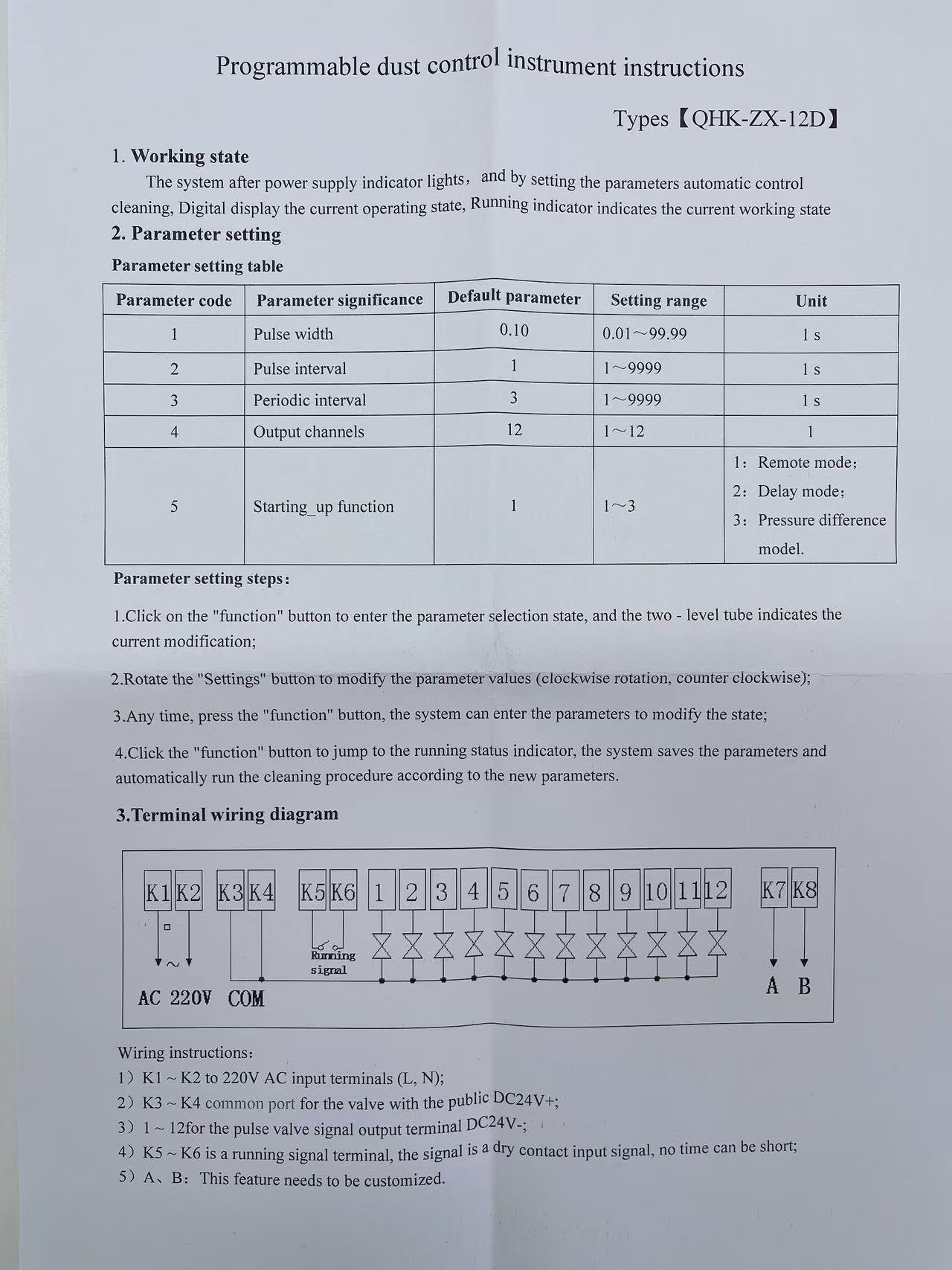Timer controller
-
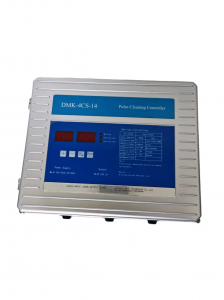
The DMK – 4CS – 14 pulse controller
This is a Pulse Cleaning Controller, model DMK – 4CS – 14, produced by a Shanghai – based company (SHANGHAI AASS TECHNOLOGY CO., LTD). It is often used in equipment like bag – type dust collectors. By sending out pulse control signals, it cleans filtering components (such as filter bags) at set times or as needed, ensuring the continuous and efficient operation of the dust removal system.
Key information:- Power Supply: Supports AC 185V – 264V, 50 – 60Hz alternating current, with an output of DC 24V/1A.
- Functions: The panel has a display window and operation buttons. It can set parameters related to ash cleaning (such as pulse width, interval, etc.), enabling automatic or manual ash – cleaning control to maintain the filtering performance of dust – removal equipment.
-
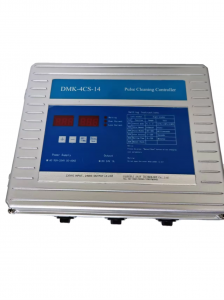
The DMK – 4CS – 14 controller
The DMK – 4CS – 14 controller has a built – in specific control program. Through the buttons and display window on the panel, the operator can set parameters related to cleaning, such as the pulse interval time (the time interval between two jets) and the pulse width (the duration of each jet). After setting the parameters, the controller will send out electrical signals regularly according to the set logic.Solenoid Valve Driving
When the controller sends out an electrical signal, the signal will be transmitted to the connected pulse solenoid valve. The pulse solenoid valve is a key executive component in the cleaning system. Before receiving the electrical signal from the controller, it is in a closed state, cutting off the path of compressed air. When receiving the electrical signal, the solenoid valve opens quickly, allowing compressed air to pass through.Compressed Air Jet
Compressed air is usually provided by an air source device (such as an air compressor) and is stored and stabilized by an air storage tank to ensure that there is compressed air with sufficient pressure and flow. When the pulse solenoid valve is opened, the compressed air will pass through the orifice on the injection pipe at a very high speed, forming a powerful pulse air flow.Filter Bag Cleaning
These high – speed pulse air flows are directly injected into the interior of the filter bag. Under the action of the pulse air flow, the filter bag will expand instantaneously, generating an outward tension. Since there are dust and other impurities attached to the surface of the filter bag, under the expansion of the filter bag and the impact of the air flow, the dust attached to the surface of the filter bag will be shaken off and fall into the ash hopper below, thus realizing the cleaning of the filter bag, restoring the filtering performance of the filter bag, and ensuring the continuous and efficient operation of the dust removal equipment. -
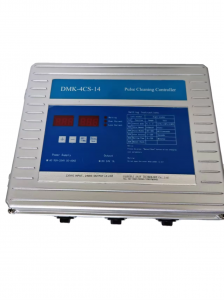
What is the cleaning principle of the DMK-4CS-14 controller?
The DMK – 4CS – 14 pulse cleaning controller is mainly used to control the pulse jet cleaning system. Its cleaning principle is based on the following key links:
Signal Control
The DMK – 4CS – 14 controller has a built – in specific control program. Through the buttons and display window on the panel, the operator can set parameters related to cleaning, such as the pulse interval time (the time interval between two jets) and the pulse width (the duration of each jet). After setting the parameters, the controller will send out electrical signals regularly according to the set logic.Solenoid Valve Driving
When the controller sends out an electrical signal, the signal will be transmitted to the connected pulse solenoid valve. The pulse solenoid valve is a key executive component in the cleaning system. Before receiving the electrical signal from the controller, it is in a closed state, cutting off the path of compressed air. When receiving the electrical signal, the solenoid valve opens quickly, allowing compressed air to pass through.Compressed Air Jet
Compressed air is usually provided by an air source device (such as an air compressor) and is stored and stabilized by an air storage tank to ensure that there is compressed air with sufficient pressure and flow. When the pulse solenoid valve is opened, the compressed air will pass through the orifice on the injection pipe at a very high speed, forming a powerful pulse air flow.Filter Bag Cleaning
These high – speed pulse air flows are directly injected into the interior of the filter bag. Under the action of the pulse air flow, the filter bag will expand instantaneously, generating an outward tension. Since there are dust and other impurities attached to the surface of the filter bag, under the expansion of the filter bag and the impact of the air flow, the dust attached to the surface of the filter bag will be shaken off and fall into the ash hopper below, thus realizing the cleaning of the filter bag, restoring the filtering performance of the filter bag, and ensuring the continuous and efficient operation of the dust removal equipment.In short, the DMK – 4CS – 14 controller precisely controls the opening and closing of the solenoid valve and uses compressed air pulses to impact and shake the filter bag, thereby removing the dust on the surface of the filter bag and completing the cleaning process. -
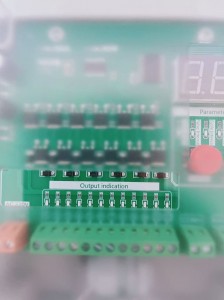
Unleash the Power of Efficient Dust Removal with the High Quality QHK-ZX-12D Pulse Controller
When it comes to maintaining a clean and healthy industrial environment, having an effective dust removal system is crucial. The High Quality QHK-ZX-12D Pulse Controller for Dust Removal is a state-of-the-art device that takes dust collection to the next level, offering superior performance and innovative features.
The QHK-ZX-12D Pulse Controller is designed with precision and durability in mind. Its high-quality build ensures reliable operation even in the most challenging conditions. The advanced pulse control technology enables it to deliver powerful and consistent cleaning pulses, effectively removing dust from filters and ensuring maximum airflow. This not only extends the lifespan of your dust collection equipment but also improves overall system efficiency.
One of the standout features of the QHK-ZX-12D Pulse Controller is its flexibility. It can be configured to work with different types of dust collectors and filter media, making it a versatile choice for a variety of applications. Whether you’re operating a small workshop or a large industrial facility, this controller can be customized to meet your specific dust removal needs.
In addition to its performance capabilities, the QHK-ZX-12D Pulse Controller also offers enhanced safety features. The built-in diagnostic system continuously monitors the controller’s operation, alerting you to any potential issues before they become major problems. This proactive approach helps to minimize downtime and ensure the smooth running of your dust removal system.
Overall, the High Quality QHK-ZX-12D Pulse Controller for Dust Removal is a must-have for any business that values clean air and efficient operations. Its advanced technology, flexibility, and safety features make it a reliable and cost-effective solution for all your dust removal needs. Upgrade your dust collection system with the QHK-ZX-12D Pulse Controller and enjoy the benefits of a cleaner, healthier workplace.
-
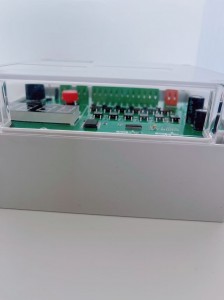
High Quality QHK-ZX-12D Pulse Controller for Dust Removal
When it comes to maintaining a clean and healthy industrial environment, having an effective dust removal system is crucial. The High Quality QHK-ZX-12D Pulse Controller for Dust Removal is a state-of-the-art device that takes dust collection to the next level, offering superior performance and innovative features.The QHK-ZX-12D Pulse Controller is designed with precision and durability in mind. Its high-quality build ensures reliable operation even in the most challenging conditions. The advanced pulse control technology enables it to deliver powerful and consistent cleaning pulses, effectively removing dust from filters and ensuring maximum airflow. This not only extends the lifespan of your dust collection equipment but also improves overall system efficiency.One of the standout features of the QHK-ZX-12D Pulse Controller is its flexibility. It can be configured to work with different types of dust collectors and filter media, making it a versatile choice for a variety of applications. Whether you’re operating a small workshop or a large industrial facility, this controller can be customized to meet your specific dust removal needs.In addition to its performance capabilities, the QHK-ZX-12D Pulse Controller also offers enhanced safety features. The built-in diagnostic system continuously monitors the controller’s operation, alerting you to any potential issues before they become major problems. This proactive approach helps to minimize downtime and ensure the smooth running of your dust removal system.Overall, the High Quality QHK-ZX-12D Pulse Controller for Dust Removal is a must-have for any business that values clean air and efficient operations. Its advanced technology, flexibility, and safety features make it a reliable and cost-effective solution for all your dust removal needs. Upgrade your dust collection system with the QHK-ZX-12D Pulse Controller and enjoy the benefits of a cleaner, healthier workplace. -
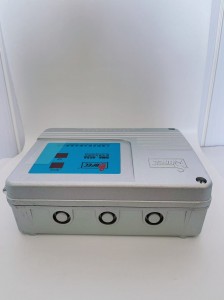
Introduction of DMK-4CSA-20 Controller
1. Overview
The DMK-4CSA-20 is a pulse injection controller, which serves as the main control device for the pulse injection cleaning system of the pulse bag dust collector. It controls the electromagnetic pulse valves by outputting signals, enabling the compressed air to cyclically inject and clean the filter bags. This maintains the resistance of the dust collector within the set range, ensuring the dust collector’s processing capacity and dust removal efficiency.2. Functional Features
- Flexible Control Modes: It adopts a programmable combined output mode, capable of achieving one-machine control for small-scale dust collectors with less than 19 output points. It can be combined into a mode of M lift valves + N pulse valves, easily realizing M + MN point switch quantity output. It can achieve both online and offline control. When M = 0, it is in the offline cleaning mode.
- Superior Output Performance: Using imported high-power contactless devices for output, it can achieve real-time output of the pulse valves, improving the hysteresis phenomenon of relay output.
- Diverse Parameter Settings: The core control uses a single-chip microcomputer, allowing the setting of key parameters, including digital display, cycle interval, pulse interval, and pulse width, etc. And it controls the cleaning process according to the “Stop/Run” signal. The output pulse width can be adjusted within the range of 0.01 – 0.99 seconds. The adjustment range of the output pulse interval is 1 – 99 seconds, and the adjustable range of the cycle interval is 0 – 99 minutes.
3. Technical Parameters
- Input Voltage: 220V AC.
- Output Voltage: 24V DC.
- Number of Output Bits: 20 bits, which can control 9 – 20 electromagnetic pulse valves.
- Dimensions: 240mm×160mm×90mm.
- Working Environment: The temperature ranges from -25℃ to 55℃, the relative humidity is less than 85%, and there is no serious corrosive gas, conductive dust, severe vibration, or impact in the surroundings.
-
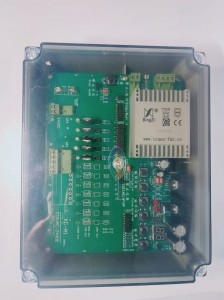
Display Control Instruments: A Key Link in Industrial Process Automation
Display control instruments, as important components of detection and control products in industrial process automation systems, have left a profound mark and played an irreplaceable role in many industries, including national defense, steel, power, petrochemicals, machinery, pharmaceuticals, textiles, metallurgy, and printing and dyeing. They are like the intelligent eyes and dexterous hands in industrial production, capable of sensitively perceiving changes in various physical quantities and quickly and accurately regulating relevant equipment.
The core functions of display control instruments include comprehensive processing of various signals such as temperature, pressure, liquid level, and speed on – site. First, they accurately collect these signals to ensure the acquisition of the most real and accurate data. Then, they display the data in a clear and intuitive manner. Whether it is through pointer, recording pen, printing, or display screen, operators can clearly understand the current operating status of the system at a glance. In terms of control, they precisely control relevant equipment based on preset parameters and algorithms, ensuring that the entire production process runs stably in accordance with established technological requirements. They also have a remote transmission function, which can transmit the collected data to a remote monitoring center, facilitating managers to grasp the production situation anytime and anywhere. The communication function enables display control instruments to conduct efficient data interaction with other devices, constructing a large – scale and intelligent industrial automation network. The printing function provides convenience for data preservation and analysis, facilitating subsequent traceability and optimization of the production process.To meet the diverse needs of different industries and scenarios, display control instruments exhibit many remarkable features in technology and design. In terms of anti – interference ability and reliability, they adopt IC chips with higher integration, advanced SMT surface – mount technology, and unique circuit shielding technology. The comprehensive application of these technologies makes display control instruments seem to wear a solid “protective armor,” enabling them to work stably for a long time in an electromagnetic – interference environment and ensuring the accuracy of data and the reliability of control. Their universal input jumper settings are highly innovative. Each instrument can easily achieve input of various indexing numbers, standard signals, remote – transmission pressure signals, and millivolt signals through simple and quick parameter settings, greatly improving the instrument’s versatility and enabling it to adapt to complex and changeable industrial environments. The modular universal circuit structure is also a major highlight. Through simple module combinations, various functions of the instrument can be transformed, from basic measurement and display functions to complex control and communication functions, which can be flexibly adjusted according to actual needs, significantly enhancing the instrument’s versatility and flexibility.In terms of calibration, display control instruments adopt a microcomputer – controlled full – automatic digital calibration system, abandoning the traditional potentiometer adjustment method. This advanced calibration system not only improves the accuracy and efficiency of calibration but also reduces errors and instability factors caused by manual adjustment. Their appearance design also fully considers aesthetics and practicality, with a variety of appearance structures and sizes available, enabling perfect integration with different industrial devices and operating environments. Both the entire machine and the movement assembly adopt a snap – in structure. This ingenious design makes maintenance and disassembly extremely convenient, greatly reducing equipment maintenance costs and downtime. In terms of power supply selection, display control instruments are also very flexible. They can choose conventional AC 220V, 50/60HZ power supply, 90 – 265V switching power supply, or DC 24V power supply to meet the power supply requirements of different occasions. In addition, they can be equipped with RS – 232/RS – 485 or RS – 422 communication interfaces, facilitating connection with the host computer to form a more powerful control system and achieving a higher level of automated control and management. -
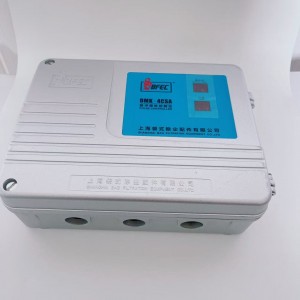
A Comprehensive Analysis of Control Instruments
In modern industrial production and numerous technological application scenarios, control instruments play an extremely crucial role. They are like precise commanders, regulating various complex systems in an orderly manner. Essentially, a control instrument is a device that automatically controls the controlled variables. It accurately compares the measured signals with the set values, calculates based on specific control laws for the deviation signals, and finally outputs the calculation results as specified signals to achieve precise control over the entire process.
Control instruments come in a wide variety of classifications. In terms of energy sources, there are electric, pneumatic, and hydraulic control instruments. Electric control instruments are widely used in the industrial field due to their high efficiency, precision, and ease of integration with modern electrical systems. Pneumatic control instruments, on the other hand, hold a certain market share because of their safety in environments with high explosion – proof requirements and their adaptability to certain special processes. Hydraulic control instruments play an important role in situations where high torque and high – power output are required. Structurally, they can be divided into base – mounted and unit – combined types. All components of base – mounted control instruments are closely connected through an inseparable mechanical structure and are installed in a single enclosure. Just one instrument can handle a series of tasks such as measurement, recording, and control in simple automation systems. Common examples include temperature controllers and pressure controllers. They are compact in structure and concentrated in function, suitable for relatively independent small – scale systems with less complex control requirements. Unit – combined controllers, however, consist of multiple units such as 变送 (transmitter), regulation, operation, display, and execution. Standard signals are used for communication between these units. This modular design allows for flexible combination of various units according to different needs, enabling the construction of control systems of different complexities. As a result, it greatly improves the versatility and flexibility of control instruments, and is widely applied in large – scale industrial automation production lines and complex industrial process control systems.There are various sophisticated control laws embedded within control instruments, which are the core of achieving precise control. In the field of chemical automation, common basic control laws include proportional action (P), integral action (I), and derivative action (D). In proportional action, the change in the controller’s output is in strict proportion to the change in the deviation. The larger the deviation, the stronger the control action.In situations such as liquid – level control where strict elimination of residual deviation is not required, proportional action alone can achieve good control results. In integral action, the rate of change of the controller’s output is proportional to the deviation. The longer the deviation exists, the stronger the control action. It is mainly used in situations where high requirements for eliminating residual deviation are imposed. However, it is rarely used alone in the chemical industry. In derivative action, the controller’s output is proportional to the rate of change of the deviation. It can excel in situations where accelerating the regulation process is necessary, and is also seldom used alone in the chemical industry. In practical applications, control laws are often a clever combination of proportional action and other actions. For example, for the control of general parameters such as flow rate, proportional – integral action (PI) is commonly used. It combines the advantages of proportional action’s rapid response to deviation and integral action’s elimination of residual deviation. For objects with large inertia, such as temperature and composition control, proportional – integral – derivative action (PID) is usually adopted. This combination can more comprehensively deal with complex control situations and achieve more accurate and efficient control.Control instruments are widely applied in industrial production and many other industries. They can cooperate seamlessly with various sensors and transmitters to achieve accurate measurement and clear display of physical quantities such as temperature, pressure, liquid level, volume, and force. Moreover, they can coordinate with various actuators to perform PID regulation and control on electric heating equipment, electromagnetic, and electric valves. They also have alarm control and data acquisition functions. In the petrochemical industry, the precise control of key parameters such as reaction temperature and pressure by control instruments is directly related to product quality and the safety and stability of the production process. In the pharmaceutical industry, they ensure the accuracy of raw material ratios during drug production and the precision of finished product packaging dosages, safeguarding drug quality and patient safety. In the food processing industry, they are used for accurate metering of ingredients and finished products, ensuring strict compliance with food quality and safety standards. From large – scale industrial production to fine – scale pharmaceutical and food processing, control instruments are everywhere, providing solid support for the efficient and stable operation of various industries. -
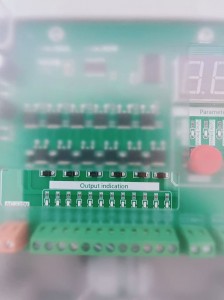
Dust removal equipment controller industry development trend and prospect
In the context of the increasing global environmental awareness and the continuous expansion of industrial production scale, the market demand for dust removal equipment is growing. As the core control component of dust removal equipment, the dust removal equipment controller industry has also ushered in new development opportunities and challenges. In-depth analysis of the development trend of this industry is of great significance for relevant enterprises to grasp the market dynamics and formulate reasonable development strategies.
Technological innovation promotes product upgrading
Deep integration of intelligent control technologyWith the rapid development of cutting-edge technologies such as the Internet of Things, big data and artificial intelligence, intelligence has become an important development trend in the dust removal equipment controller industry. In the future, the dust removal equipment controller will be more intelligent, able to collect and analyze a large number of data related to the operation of the dust removal system in real time, such as dust concentration, equipment pressure, temperature, valve switching status, etc. Through the deep mining and analysis of these data, the controller can use artificial intelligence algorithms to automatically optimize the cleaning strategy and achieve accurate control of the dust removal equipment. For example, according to the generation law and change trend of dust under different working conditions, the pulse width, pulse interval and cleaning cycle are intelligently adjusted, so that the dust removal equipment is always maintained in the best operating state, which not only improves the dust removal efficiency, but also effectively reduces energy consumption and equipment wear. At the same time, the intelligent controller can also achieve remote monitoring and fault diagnosis functions, operators can check the operating status of the equipment anytime and anywhere through mobile phones, computers and other terminal equipment, when the equipment is abnormal, the controller can quickly issue an alarm, and through data analysis to locate the cause of the fault, to provide accurate maintenance suggestions for maintenance personnel. Greatly improve the timeliness and convenience of equipment maintenance.
Application of high precision sensor technology
The application of high precision sensor will further improve the performance of dust removal equipment controller. In the dust removal system, the accurate measurement of dust concentration, pressure, temperature and other parameters is very important for the controller to achieve accurate control. The new high-precision dust concentration sensor can more accurately detect the content of fine dust particles in the air, provide more accurate dust concentration data for the controller, so that it can adjust the cleaning force and frequency according to the actual dust pollution situation. At the same time, the high-precision pressure sensor and temperature sensor can monitor the pressure and temperature changes inside the dust removal equipment in real time, and help the controller to timely find abnormal conditions during the operation of the equipment, such as pressure rise caused by the blockage of the filter bag, equipment overheating and other problems, and take appropriate measures to adjust and warn, to ensure the safe and stable operation of the dust removal equipment.
-
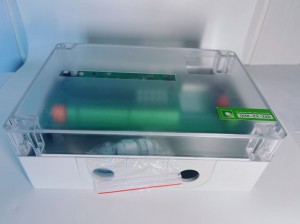
Timer controller:Cleaning Control Function
Main Functions
Cleaning Control FunctionCleaning control is one of the core functions of the dust removal equipment controller. By accurately setting parameters such as pulse width, pulse interval, and cycle interval, the controller can achieve efficient cleaning of filter bags. For example, the pulse width determines the duration of each blow of the electromagnetic pulse valve. An appropriate pulse width ensures that the compressed air effectively removes dust from the surface of the filter bags without causing excessive impact on the filter bags. The pulse interval controls the time interval between adjacent blows. A reasonable pulse interval allows the filter bags to restore their filtering performance sufficiently between two blows, thus ensuring the stable operation of the dust collector.Adjustable Output Channel FunctionDust removal equipment of different scales has different requirements for the number of output channels of the controller. The dust removal equipment controller has the function of adjustable output channels. Operators can use the “+” and “-” buttons of the universal dial switch to set the number of output channels of the controller according to actual needs. This function enables the controller to adapt to various dust removal equipment of different specifications, greatly improving its versatility and flexibility. For instance, a small dust collector may only require a small number of output channels to control a small number of electromagnetic pulse valves, while a large dust removal system may need a large number of output channels to achieve precise control of a large number of pulse valves. -
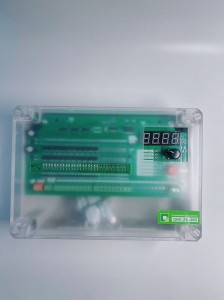
Dust Removal Equipment Controller: Principles, Functions and Technical Indicators
In modern industrial production, the widespread application of dust removal equipment is crucial for reducing environmental pollution, ensuring the safety of the production environment, and improving production efficiency. As the core component of the dust removal system, the performance of the dust removal equipment controller directly affects the operation of dust removal equipment. This article will delve into the working principles, main functions, and key technical indicators of the dust removal equipment controller.
Working PrinciplesThe dust removal equipment controller uses an industrial-grade chip as its control core and coordinates the operation of various components through precise logical operations. Its working process mainly revolves around the control of electromagnetic pulse valves. There are clear setting marks on the printed circuit board, facilitating operators to set the parameters of the controller according to actual needs. After the controller is started, electrical signals are output from each output terminal, which are used to control the opening of electromagnetic pulse valves. Once the electromagnetic pulse valves open, compressed air is blown to clean the filter bags. Meanwhile, the controller is equipped with manual operation buttons. During equipment debugging and the initial operation stage, operators can use these buttons for convenient operation to ensure the normal operation of the equipment.Take the pulse bag dust collector as an example. While filtering dust-laden gas, the dust collector conducts blow cleaning simultaneously. The dust removal controller outputs electrical signals in sequence to control the pulse valves to blow and clean one by one according to the preset pulse width and pulse interval. During this process, the controller monitors the working status of each output point in real time and displays it through the working indication device, enabling operators to quickly judge the equipment operation status. -
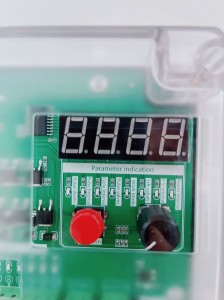
High quality QHK-ZX-12D pulse controller
Dust Removal Equipment Controller: Precision and Efficiency Redefined
The dust removal equipment controller is a vital component in modern dust control systems, designed to ensure optimal performance and efficiency.
Advanced Control Functions
It comes equipped with a range of advanced control features. With precise timing control, it can accurately regulate the operation time of each component in the dust removal equipment, such as the start and stop times of the dust collector and the vibration device for dust cleaning. This ensures that the dust removal process is carried out in an orderly and efficient manner. In addition, it has intelligent pressure monitoring. By continuously monitoring the pressure difference in the dust removal system, it can promptly detect any blockages or abnormal situations and take corresponding measures to maintain the stability of the system.User – Friendly Interface
Featuring a user – friendly interface, the controller is easy to operate and configure. The intuitive display screen shows real – time operating data, including dust concentration, equipment running status, and alarm information. Operators can easily set parameters and adjust operating modes through the simple control buttons, making it convenient for both experienced technicians and novice operators to use.High Reliability and Stability
Built with high – quality components and advanced circuit design, the controller offers excellent reliability and stability. It can operate stably in harsh industrial environments with high temperatures, high humidity, and strong electromagnetic interference. Its robust construction ensures minimal downtime and low maintenance costs, providing a reliable guarantee for the long – term operation of the dust removal equipment.Versatile Compatibility
This controller is highly versatile and compatible with a wide variety of dust removal equipment, including bag filters, electrostatic precipitators, and wet scrubbers. It can be easily integrated into different dust control systems, meeting the specific needs of various industries such as cement, steel, and power generation.In summary, the dust removal equipment controller is a high – performance, reliable, and user – friendly device that plays a crucial role in improving dust removal efficiency, reducing environmental pollution, and ensuring the smooth operation of industrial production.
